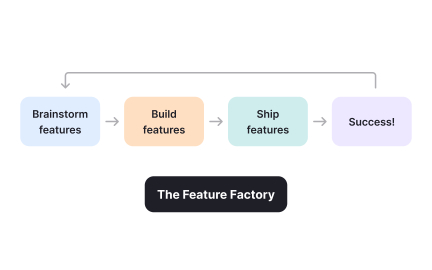Technical Debt
Technical debt is the cost of quick engineering shortcuts that later require extra work, impacting code quality, maintenance, and scalability.
What is Technical Debt?
Your development velocity slows down over time because past shortcuts and quick fixes accumulate into complex code that's difficult to modify, debug, and extend, forcing developers to spend more time working around problems than building new features.
Most teams create technical debt unconsciously through deadline pressure and expedient solutions without systematic planning for code quality maintenance, missing opportunities to prevent accumulated complexity that eventually cripples development productivity.
Technical debt refers to the accumulated cost of quick fixes, shortcuts, and suboptimal technical decisions that make future development more difficult and expensive, similar to financial debt that requires ongoing interest payments and eventual repayment.
Teams managing technical debt effectively achieve 40% faster development velocity, 60% fewer production issues, and significantly lower maintenance costs because code quality enables rather than hinders feature development and system reliability.
Think about how companies like Spotify invest systematically in technical debt reduction to maintain development speed as their platform grows, or how successful startups balance rapid iteration with code quality to avoid technical bankruptcy that could halt growth.
Why Technical Debt Matters for Long-Term Development Success
Your development team struggles to deliver new features efficiently because existing code is complex and fragile, requiring extensive workarounds and careful navigation that slow down every development task and increase the risk of introducing new bugs.
The cost of technical debt compounds exponentially over time through decreased development productivity, increased bug rates, and reduced ability to adapt to changing market needs when code changes become risky and time-consuming.
What effective technical debt management delivers:
Sustained development velocity and team productivity because clean, well-structured code enables developers to implement new features efficiently rather than struggling with complex legacy systems that resist modification.
When technical debt is managed proactively, development feels fast and reliable rather than careful navigation through fragile code that might break unpredictably with small changes.
Better system reliability and fewer production issues through code quality that prevents bugs and makes systems more predictable rather than accumulating complexity that creates unexpected failures and user-facing problems.
Enhanced ability to adapt to market changes because well-maintained code can be modified quickly to support new requirements rather than requiring extensive rewrites when business needs evolve.
Improved developer satisfaction and retention as teams can focus on creating value rather than fighting with poorly designed systems that make every task frustrating and time-consuming.
Lower long-term maintenance costs through systematic debt management that prevents expensive emergency fixes and system rewrites when technical debt reaches unsustainable levels.
Advanced Technical Debt Management Strategies
Once you've established basic debt management capabilities, implement sophisticated code quality and system architecture approaches.
Automated Debt Detection and Monitoring: Use tools and metrics to identify technical debt accumulation automatically rather than relying only on developer awareness of code quality issues that might not be visible until problems affect productivity.
Strategic Debt Acceptance and Planning: Make conscious decisions about when to accept technical debt for business reasons while planning systematic debt reduction that prevents unsustainable accumulation.
Cross-Team Debt Coordination: Manage technical debt across multiple development teams and system components rather than isolated debt management that might not address systemic architecture issues.
Debt Communication and Stakeholder Education: Help business stakeholders understand technical debt impact and investment needs rather than treating debt as purely technical concern without business relevance.
Step 1: Identify and Assess Current Technical Debt (Week 1)
Audit existing code, systems, and processes to understand where technical shortcuts and quality issues create development friction rather than trying to manage debt without comprehensive understanding of current problems.
This creates debt management foundation based on actual development obstacles rather than theoretical code quality concerns that might not affect productivity significantly.
Step 2: Categorize Debt by Impact and Effort to Address (Week 1-2)
Prioritize technical debt based on how much it slows development and how difficult it would be to fix rather than treating all code quality issues as equally important for team productivity and system reliability.
Focus debt management on problems that actually affect development velocity rather than perfectionist code quality improvements that don't provide proportional productivity benefits.
Step 3: Integrate Debt Reduction into Development Planning (Week 2)
Allocate dedicated time for technical debt reduction within development cycles rather than hoping debt gets addressed during feature development when time pressure discourages quality improvements.
Balance debt reduction with feature development to maintain business progress while systematically improving code quality that enables future development efficiency.
Step 4: Establish Code Quality Standards and Review Processes (Week 2-3)
Create development practices that prevent new technical debt accumulation through code reviews, automated testing, and quality standards rather than just fixing existing problems without preventing future debt creation.
Step 5: Track Debt Impact on Development Velocity and System Performance (Week 3)
Measure how technical debt affects development speed and system reliability to justify debt reduction investment while monitoring improvement progress over time.
This ensures technical debt management generates measurable business value rather than just satisfying developer preferences for cleaner code without productivity impact demonstration.
If technical debt management doesn't improve development velocity, focus on debt that actually affects feature delivery rather than just code organization that might not impact productivity meaningfully.
Shopify's Platform Scaling Through Debt Management
Shopify systematically manages technical debt while scaling their e-commerce platform, maintaining development velocity and system reliability despite rapid growth and increasing complexity through disciplined debt reduction practices.
Results: Sustained development productivity during rapid scaling, reliable platform performance under increasing load, and successful competitive positioning through technical capabilities that enable fast feature delivery.
Netflix's Microservices Debt Management
Netflix manages technical debt across hundreds of microservices through systematic refactoring and architectural improvements that maintain system reliability while enabling rapid feature development across diverse content and streaming capabilities.
Their debt management excellence enables global streaming platform operation through technical foundation that supports rather than constrains business growth and innovation.
The Problem: Technical debt discussions that focus on code perfectionism rather than actual impact on development productivity and business outcomes.
The Fix: Prioritize debt reduction based on development velocity impact rather than abstract code quality concerns that might not affect team productivity or system reliability meaningfully.
The Problem: Debt management that happens only during crisis situations when systems break or development grinds to a halt due to accumulated complexity.
The Fix: Address technical debt proactively through regular investment rather than waiting for crisis situations that require expensive emergency fixes and system rewrites.
The Problem: Technical debt reduction that doesn't get stakeholder support because business value isn't communicated clearly in terms of development efficiency and system reliability.
The Fix: Connect technical debt management to business outcomes including development speed, system reliability, and competitive responsiveness rather than just technical code quality arguments.
Create technical debt management approaches that enhance long-term development productivity rather than just satisfying developer preferences for cleaner code without measurable business impact.
What You'll Need: Code analysis tools, development process integration, and 3-4 weeks for systematic technical debt assessment and management implementation.
Week 1: Current debt identification and impact assessment
Week 2: Debt prioritization and reduction planning
Week 3: Process integration and quality standard establishment
Week 4: Monitoring systems and progress tracking implementation
First step you can take today:
Ask your development team to identify the three code areas or system components that slow them down most when implementing new features, then estimate how much development time those areas consume.
Success metrics to track:
Development velocity improvements, code change failure rates, time-to-implement feature reductions, and developer satisfaction with code quality through systematic debt management.
Your technical debt management should make development feel efficient and reliable rather than constantly struggling with complex systems that resist modification and create unexpected problems.
Recommended resources
Courses

Accessibility Foundations

Wireframing





